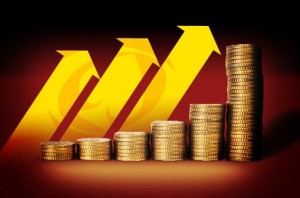
Estimated value
If you read carefully poker strategy books or our poker articles on the website, you will repeatedly find claims that Poor poker players can win in a short period of timebut will lose in the long run. The opposite rule applies to professionals and very good players. They may lose in the short term, but will usually win in the long term.
Why is that? It is because of a concept known as expected value [Video]. The expected value is your expected profit on the amount built. For example, let's say you bet with me by flipping a coin. If it's a coat of arms, I give you 100Lt. If it is a number, you give me 1Lt. Should you theoretically agree to the bet (given that the toss is fair and the odds of the coat of arms or the number turning up 50-50)?
Of course! There is a 50% chance of the coat of arms turning up, meaning you win 100Lt. So your expected win is 50Lt (0.50 * 100Lt). If the number opens, you lose 1Lt. So your expected loss is 0.50Lt (0.50 * 1Lt). Your expected profit is your expected win minus your expected loss. So your expected profit is 49.50Lt.
Obviously, you won't win 49.50Lt. You will win 100Lt or lose 1Lt. However, you should look at the bet as a "win" of 49.50Lt. The results in short-term gambling are influenced by chance, a term often used in poker poker variations. However, in the long run, your results will very closely reflect your expected value. If you flipped a coin as in the example a million times, your final profit would be extremely close to £49.5 million.
So how is expected value applied in poker? The clearest example of expected value is pot odds theory (also implied odds, reverse implied odds, etc.). Pot odds theory states that you should only buy (draw) when you have a positive expected value.
Other examples of expected value are demonstrated in the more complex moves below.
Bluffing and responding to bluffs depends on the expected value. When you bluff, you should estimate in your mind the probability of success of the bluff. This probability of success should be compared with the expected value and we should aim for a positive probability. For example, if I have 100$ in the pot and I am bluffing with 50$, I need the bluff to work with 33% (given that I have a probability of winning of 0% in the case of a call). This is because I need to win 1 out of 3 times to avoid losses.
The expected value thus helps to clarify the difference between large errors and small errors. Big mistakes occur when a player makes a decision that has a very large negative expected value, while small mistakes occur when a player misses a small expected value.
 If you plan to play a lot of poker, you should eventually know the expected value of your hourly play. In order to do this you will need to keep accurate notes. You can do this by using a specialised poker recording software such as Holdem Manager or PokerTracker. After a while, you will be able to make a reasonable estimate of your expected win or loss per hour of play (you would need to play at least 200 hours in the same place and limit to get the right result).
If you plan to play a lot of poker, you should eventually know the expected value of your hourly play. In order to do this you will need to keep accurate notes. You can do this by using a specialised poker recording software such as Holdem Manager or PokerTracker. After a while, you will be able to make a reasonable estimate of your expected win or loss per hour of play (you would need to play at least 200 hours in the same place and limit to get the right result).
The expected value is another reason why you should never play a game you cannot afford. If you are afraid of losing, you will be reluctant to play when you have a small advantage. In some hands, you will miss a lot of expected value, which is likely to make you a losing player overall.





